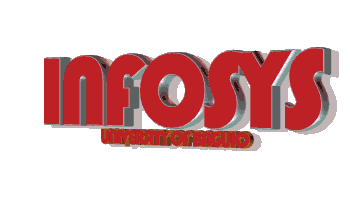




CLICK HERE TO READ MY REACTION
![]() Educating your Patients
through an EMR
Educating your Patients
through an EMR![]()
Whether your
practice already maintains pre-printed brochures for your patients on various
topics or not, patients want answers. Prescription information/education
is not enough. Reviewing your course of care with your patients is always
welcome: but how well will your patients remember all of the answers? If
you have a full schedule, wouldn't you rather be able to provide your patient
with full documentation regarding their care instead of hoping they remember
while rushing to your next appointment?
If your
patient is suffering from sinusitis, wouldn't it be helpful to your patient to
provide them with information such as:
·
What
is sinusitis?
·
How
does sinusitis occur?
·
What
are the symptoms of sinusitis?
·
How
is it treated?
·
How
long does it last?
·
How
do I take care of myself?
·
What
can I do to prevent it from returning?
To choose the
EMR that is best for your practice, consider the following:
| Know what
you need the system to do. Don't pay for the bells and whistles that
your practice will never actually use but also look for systems that will
expand to meet your needs. | |
| Carefully
review the technical support and clinical updates the vendor provides.
Your vendor should be able to provide training and staff support for your
system. If they can't, find another vendor who can. | |
| Check that
the vendor has experience working with your specialty or similar practice
size as well as how existing sites feel about their experience with that
vendor. | |
| Your EMR
should interface with your practice management software. Be sure to
consider what new hardware and equipment interfaces you will need to buy and
negotiate the service agreements in advance of purchasing the program.
Networking, wiring and hubs will all need to be purchased if implementing a
network for the first time. |
Information
such as this should be available with the click of the mouse on a variety of
topics through your EMR. Forcing your patients to do their own research on
their health may lead them to inaccurate information or to research other
providers as well!
Does your EMR offer the ability educate your patients? If not, it may be time to look towards a more dynamic product that will allow you to provide greater quality of care while also providing ease of documentation for patient visits.
The thought of transferring years of paper patient records into an electronic format is overwhelming for most physicians. Many of the daily inadequacies and headaches of the paper chart continue to be overlooked because the alternative consequences seem more steep, when in fact, they are not. Investing in an electronic medical record (EMR) for your office is a huge undertaking but one that doesn't have to be overwhelming. Many practices intrinsically know what they need, but aren't sure how to translate their needs and choose a practice management system that will help transform the work flow of the office.
The
Importance of an EMR. Making
the transition to an electronic medical record is one of the most intelligent
business decisions that a practice can make. Determining whether an electronic
medical record makes sense in a medical office is not strictly a numbers game -
it's a matter of patient care. It is a function not only of finance, but also of
the quality of services provided, such as reduction in medical errors and
patient education.
Also EMR
Helps Contain Medical Errors. Healthcare
professionals are constantly faced with increasing administrative and
professional pressures, including controlling medical errors. Using paper
charts increases the likelihood of an error occurring because there is an
increased chance that vital documents are missing from a paper chart, including
lab reports, transcription and medication lists. Sorting through stacks of
paper to assess a patient's progress, only to find that information was omitted
when making a medical decision, also has repercussions for malpractice.
An EMR can provide even more benefits to your office that will help you control medical errors and increase the quality of care you deliver to your patients. By maintaining an interactive environment for complete patient documentation and staying apprised of your patient's medications and progress with an EMR, you can control medical errors.
![]()
![]()
![]()

|